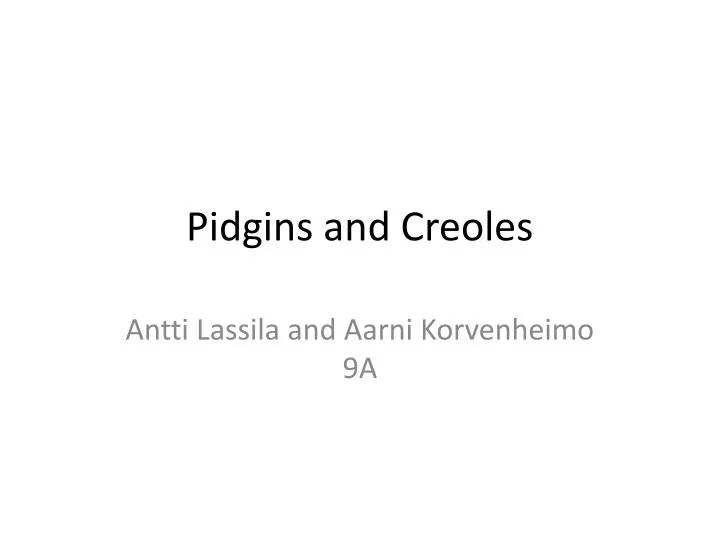

Often, pidgin languages are based on a simplified version of one main language, while borrowing vocabulary and grammar from several additional languages. Where they differ from the previous is that pidgin languages have no native speakers. Pidgin languages share the main characteristic of a lingua franca in that they are used as a means of communication between different communities. The words “ lingua franca” themselves mean “language of the Franks” in Latin, although the term “Franks” covered the whole population of Western Europe.Īlthough quite often many pidgin and creole languages can function as lingua francas, lingua francas themselves most often are neither pidgin nor creole. It was based on a simplified version of Italian, with many additions from Spanish, Portuguese, Berber, Turkish, French, Greek, and Arabic.

Actually, the term lingua franca originates from a particular language that was used for communication around the Mediterranean area for around eight centuries. Throughout history and in various places around the globe, various other languages have been used to the same effect: Greek was used in the heyday of the Hellenistic influence, Latin during the Roman Empire, Aramaic in Western Asia, and today, French, Urdu, and Swahili are used as the lingua franca in certain parts of the world. While these days, the lingua franca of the world is undoubtedly English, it wasn’t always like that.

This helps to facilitate trade and cultural exchange which helps to explain why lingua francas were also called “trade” or “bridge” languages. In essence, a lingua franca is one that is used for communication between people who have no native language in common.

Lingua Franca might be the most commonly recognised of these three terms.


 0 kommentar(er)
0 kommentar(er)
